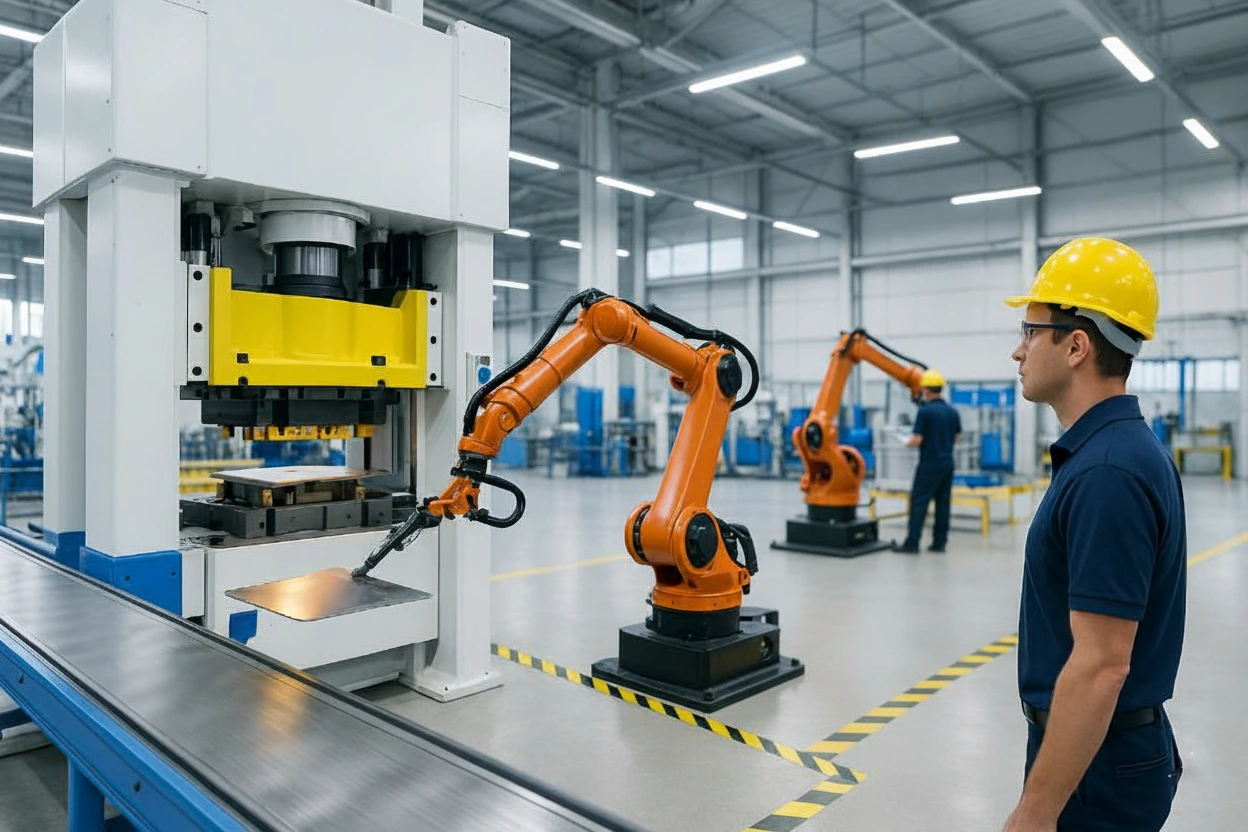Prevent unplanned stops and major risks
Keep the process in the window, protect the press and improve delivery performance.

Key Advantages
- Lower risk of costly press damage.
- Fewer stops and higher OEE.
- Consistent performance across shifts.
- Reliable delivery against plan.
Common Challenges
- Sudden line stops and missed targets.
- Parameter drift between shifts.
- High impact of die/press failures.
How Digiforming Helps
-
Safe stop in abnormal conditions aligned with safety procedures.
-
Keeps the process inside the window.
-
Shift dashboards and alarm management.
-
Monitors gas-spring pressure to prevent upstream risks.
-
Trend‑ and threshold‑based alerts.
Expected Impact & KPIs
Frequently Asked Questions
How can Defect Prevention reduce scrap in production?
−The AI anomaly detection model monitors contour flow with cameras inside the press. When contour deviations exceed learned thresholds, it warns engineers and operators before tearing or wrinkling occurs, reducing scrap significantly.
Can End-of-Line Inspection ensure only good parts leave the line?
+Yes. End-of-Line Inspection uses AI anomaly detection trained only on OK parts. Any deviation from learned patterns is flagged, ensuring defective parts do not continue downstream.
Does Wireless Pressure Monitoring support stable production?
+Yes. The system tracks nitrogen spring pressures continuously. AI-defined thresholds detect abnormal pressure drops early, preventing process instability before production starts.
How do these systems help reduce unplanned stops?
+Defect Prevention and Damage Prevention predict risks before they occur. By analyzing contour shifts and detecting foreign objects, the AI models stop issues early, avoiding costly unplanned stops.
Can I monitor production data in real time?
+Yes. Each solution provides dashboards where AI-analyzed data, thresholds, and anomaly trends are displayed live, enabling immediate corrective actions.
Do these systems help with process consistency across shifts?
+Yes. AI models apply the same anomaly detection thresholds across all shifts, ensuring consistent decision-making independent of operator differences.